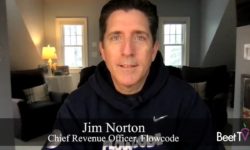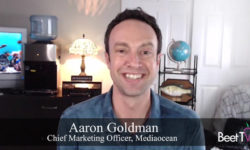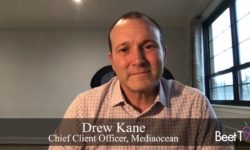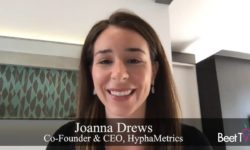If you needed any more proof that digital video was merging with traditional TV, look no further than the latest announcement from Comcast.
Last week, it announced that its FreeWheel ad serving tech unit had begun unifying its technology set, with a first stage meaning NBCUniversal now using FreeWheen’s dynamic ad decisioning capability to drive linear TV schedules.
In this video interview with Beet.TV, Ryan McConville, EVP of Ad Platforms and Operations at NBCU, explains what is happening, and why.
Better together
“Traditionally, FreeWheel has been our digital ad server,” he says. “So its duties have been kind of relegated to doing the ad decisioning on our digital footprint.
“NBCU is both a digital media company and a linear media company. On the linear side of the house, there’s another set of technology called a log scheduler. Historically, the information that’s housed in the TV log scheduler – all the information about our linear schedules and our linear audiences – is separate from all the information that’s housed in our digital ad server.
“So there is not one ad decisioning brain behind the company that is both aware of what’s going on in linear and what’s going on in digital.
“We made the decision that we needed to pick a piece of technology that would have intelligence about both pools of inventory.”
.@FreeWheel is now the lead ad decisioning technology across all of @NBCUniversal's inventory through its new AutoScheduler tool, which analyzes ad breaks and dynamically replaces ads, helping marketers make addressable TV buys. #FreeWheelEmp https://t.co/ydiA4e7yUo
— Antony Bar (@AntonyBarLDN) December 2, 2020
Speeding the switch
That now changes with the introduction of AutoScheduler, the name for the combined toolset.
It analyzes ad breaks within linear campaigns, as well as other business parameters, and automatically fills the complete schedule for advertisers, enabling the automatic placement of ads and dynamic placement of spots across NBCU’s footprint.
“All of now of our linear inventory is inside FreeWheel,” McConville says.
It is another example of ad-tech folks’ favorite hobby – breaking down silos. McConville says this latest blurring of the line would make it easier for advertisers to change strategy from linear to streaming, as many did early during the COVID-19 pandemic.
.@NBCUniversal and @FreeWheel have very closely aligned visions for the future of TV, and we are proud to be coordinating closely with them as they build One Platform, an all-in-one ad system. https://t.co/pmv6jLatel
— FreeWheel, A Comcast Company (@FreeWheel) January 9, 2020
Toward One Platform
It is also the latest step in the consolidation of FreeWheel after its 2014 acquisition by Comcast.
The companies are now engaged in an initiative called One Platform, aimed at bringing together their ad platforms.
McConville says viewers don’t differentiate between content by channel type, so he is trying to similarly unify the experience for advertisers.
“One Platform is our desire and our technology roadmap to bring together linear and digital ad serving, so that we can optimise advertising to find the most relevant audience for an advertiser,” he says.
“(That is) whether they’re watching that piece of content through a streaming platform, which is served digitally or through a traditional cable subscription, which is served linearly.”
The roadmap
AutoScheduler is the first step along the One Platform journey for McConville.
He says the next steps won’t necessarily come in 2021, but rather 2022 and beyond.
He imagines: “If they find an audience in linear that they had booked in digital, they can move those spots back and forth.”














































